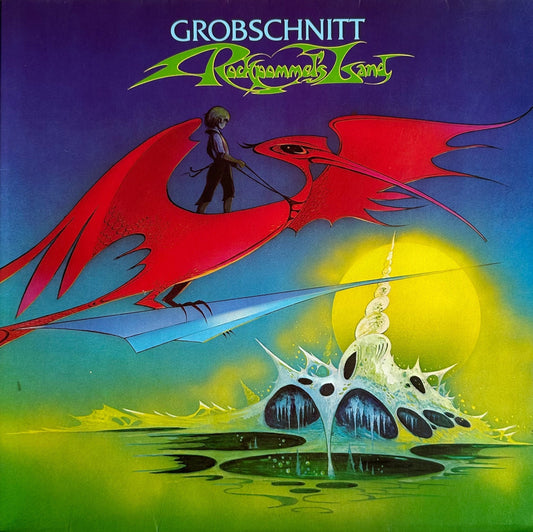No story about the Dan can be told without raising up Roger Nichols. Nichols won 4 Grammy awards for Best Sound Engineer on four Steely Dan recordings, three of which are studio albums worthy of an article on the art of sound engineering each on their own, Aja, Gaucho, and Two Against Nature. Audiophiles rarely mention these albums in their lists of recordings they use to judge systems, but any one of these three are black book tools in judging the worth of a sound system.
And this is why I’ve chosen Steely Dan for a column usually given to influences in my musical life. Certainly the Dan was a heavy influence for me, being primarily a bass player and any music written or co-written by a bass player will have fat finger curls and dark turns through the spell of the swamp. But a constant lurking elephant in this fascinating band is the care and obsession with how the songs are recorded. Roger Nichols was undoubtedly their George Martin and as critical to the success of the art of their obsession as Martin’s was to The Beatles.
From 1972 to 1980 Steely Dan released 7 studio albums with varied success, ending with Gaucho in 1980. They then went 20 years before sending up Two Against Nature in 2000. Two won three Grammy awards, Best Pop Vocal Album, Album of the Year, and Best Engineer Non-Classical for Roger Nichols. There was a lot of talk at the time that the Grammys were given more or less as lifetime achievement awards. In the 20 years between Gaucho and Two Against Nature the Dan had become FM radio/classic rock darlings. You couldn’t listen for an hour without hearing something from these guys, and albums that were not commercially successful like Countdown to Ecstasy became must-listen material.
However. Any casual listen to Two provides an insight into this obsession with doing recordings over and over until the track is perfect. Walter Becker and Donald Fagen ( the main men of Dan) used 53 musicians in the studio and only 26 made the final cut including 6 drummers (featuring Vinnie Colaiuta and Ricky Lawson) and Amy Helm on whistle. These guys were famous for laying down preliminary tracks, then bringing in drummer after drummer after drummer, then lead guitar after lead guitar after lead guitar, until they had the perfect cut. Didn’t matter if you were Larry Carlton, Lee Ritenour, or Hugh McCracken (all regular contributors). The end result was the divinity and commanded no indecision and brooked no appeal.
The astounding result is as spare as if there were four people in the studio. The attention to each instrument is palpable and perfect. Here is the first track off Two, “Gaslighting Abbie”. This is a great example of the singular attention to each instrument as it builds from guitar/kick and cymbal/bass and adding as it goes. Pay attention to the attack of the snare when it comes in. You can hear the dynamic of the stick as it fwaps the snare head each time. As vocals are added the back vocals have a real percussive quality as does the horn arrangement. Throughout the recording you can hear each instrument with clarity and presence. Then a neat bass/piano break, followed by a filthy guitar solo by Becker. Ricky Lawson on drums and Tom Barney on a bass with a tone looking to mug you in a dark alley. Nothing lost and everything gained.
Shiver me timbers.
My first listen of a Dan song was in the spring of ‘73. I had begun a life of study at UConn the previous fall which quickly spiraled (upwards) into a series of freedom experiments that had less to do with attending classes and more to do with keg parties and the pursuit of the psychedelic bus. But I still had to maintain, and I ran through a series of student jobs that included wringing the necks of chickens and student union dishwashing. I clearly remember working in the dishroom on a clean spring afternoon when “Reelin’ In The Years” came on the radio. I hadn’t started playing guitar yet but I’d been listening plenty, and the opening guitar lick of that song got my full attention while the pots and pans I was working on floated through the back door of my consciousness.
This song has been played so any times on classic rock stations I don’t have to put a copy here. Everyone who knows this song, and the licks of Elliott Randall, can hear every bar in their head. I believe this to be in the top 5 guitar solos ever recorded. This song is all over YouTube in various live versions but you will never hear it done quite with the same bite and tone as this studio version. Randall was an absolute monster and this captures his best moment.
The first Dan song I learned when I started playing bass was “Kid Charlemagne”. This tune from The Royal Scam features Bernard ‘Pretty’ Purdie on the kit and Chuck Rainey on bass. These two had done a lot of session work together prior to this track and it shows. The funk stunk up and down this cut, and Rainey’s bass was hot and added significantly to my chop shop. (Side Note 1: This song was inspired by Owsley Stanley, Grateful Dead sound man and LSD chemist extraordinaire). But my true favorite to play was not a heavily bass oriented cut. It was from Countdown to Ecstasy and titled “My Old School”.
A semi-autobiographical track with memories from Becker and Fagen’s school days at Bard College in Annandale-On-Hudson (Side Note 2: Chevy Chase attended Bard at the same time and played drums in Becker/Fagen’s first band, the Leather Canary), the line-up was basically the original Dan band from Can’t Buy a Thrill with Becker still on bass. In the mid-70’s I was enamored with horn bands and loved, completely gator-boogied, playing with big horn bands. This particular band I was in, The Pass The Hat Band, had morphed drastically from doing country folk Jimmy Buffet/John Prine to getting more aggressive as we added more members, always looking to expand into more challenging material. This in fact broke the original band up as some originals either didn’t have the chops or didn’t dig the muse. We went from three acoustic guitars and bass to two electric guitars, bass, drums, percussion (RIP Rob Fried), piano and horns and started playing the stuff we were all loving at the time. And a perfect example was “My Old School”.
Playing that song live with a full band was the most fun I’d had outside the back seat of Mom’s Bonneville. The horn arrangement was a true percussive beauty, a classic specimen of the best a horn section can do. And we had a lead guitar player John Spencer who could play Skunk Baxter’s nasty solo perfectly. I came close to falling over every time we did this, it just knocked me out.
I’ve said this in another article, but you cannot experience getting to break open the bottle of a song quite like having to learn it to play live with great musicians. You discover all the little treasures a song like this tries to keep to itself. As great a song as “My Old School” is to listen to she still has her dirty little secrets that are revealed when you have to learn it and you’re dedicated to getting it right. One of the true pleasures of playing any instrument. We ended up playing a lot of great R&B material, including Otis/Blues Brothers arrangements of the greats/Little Feat/Tower of Power/Elvin Bishop, but “My Old School” was always my favorite. A slappin yer mother arrangement, right down to the vocals.
I’m trying to get tight with you that Steely Dan, despite only 9 albums in a 30 year span, are worth the study. From a pure musical journey to the obsessive studio work that produced some of the most interesting engineering ever done, this band, these guys, Becker, Fagen and Nichols created something that you overlook or dismiss at your jeopardy. Like an earlier article on Zappa, I had to cut this short for the column’s sake, but the study of how these songs were put together, whipped, worked, searched and stretched, then pushed back into the genie’s flask is a discovery of true art and a reward in itself. Join us at the edge of a grey lake where bodies surface like ghosts in a glass. Then do it again.
Ha. Got you. That was from Gaucho. Couldn’t resist.
[I hate to disagree with Woody, but when he says that audiophiles rarely mention Steely Dan albums… every true-blue audio geek I’ve ever known has had multiple copies of Aja, agonized over the awfulness of that remastered CD, hoped for the best from the new remaster, and yadda yadda yadda: all the trappings of a true fetish piece. Donald Fagen’s solo album The Nightfly, also recorded by Nichols, will be found on most of those same shelves, and “I.G.Y.” is often heard at audio shows. One final thing that I can’t resist: Jeff “Skunk” Baxter. Who else, in the history of rock ‘n’ roll, has gone from being a Steely Doobie to a well-respected authority on missile defense, while still wearing that goat-roper ‘stache?!? It’s like something out of Buckaroo Banzai. You couldn’t make this stuff up!—Ed.]
Header image courtesy of Wikimedia Commons/Kotivalo.



